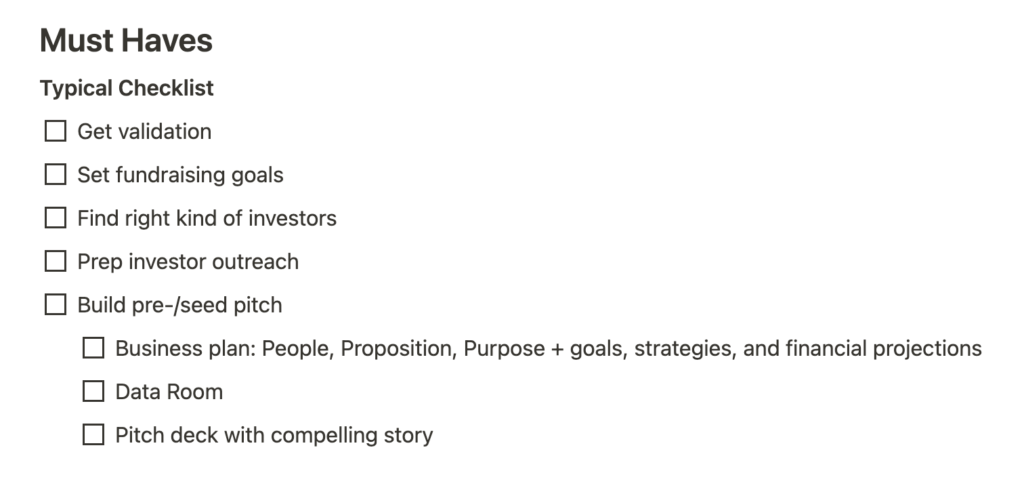It’s decided. No matter what, I’m going to hold myself accountable. Though the idea started about a year and half ago, the decision was made only last week. It’s scary, and it’s exciting. I figured it’s good to document as I go. I’m not ready to share the concept. But, I’m happy to let you in on the process until I can unmask the idea.

Step 1: Identify talent needed to build the company
Without revealing too much, I can share that we are entering the food and beverage industry. I’d like to disrupt something I’ve watched unchanged over the years. So far, I’ve only been a casual participant. Which means, I need a co-founder that can provide some distinct superpowers.
For instance, marketing is my domain. It’s a big one. Yet, I don’t have experience with physical operations. I also don’t understand all the behind the scenes logistics of our industry. The industry we’re targeting is massive but still relational on the supply side.
Luckily, I found my co-founder. For transparency, here are the superpowers and skills I think will be most helpful to our business:
- Deep industry expertise
- Thorough, thoughtful, and tasteful product knowledge
- Experience with physical operations and logistics
- Familiarity with legal landscape
- Key relationships to vendors
- Experiential marketing chops at highly credible growth companies
- High taste level
Step 2: Reach founding team alignment
We booked a 2-hour meeting for our first conversation. I can’t share all the details. However, I’ll provide the most useful tidbits. During the talk, we covered several high level items. Here’s a list of topics:
- Vision
- Individual contributions and commitment
- Competitive landscape
- Product and customer segmentation
- Business model
- Unit economics and margin
- Capital raise and loose financial projections (broadly)
- Brand story
- Content ideation
- Risks and challenges
- Next steps
They say don’t loan money to your friends, but what about getting into business with them? I think if you set clear boundaries and expectations, there’s nothing wrong with it. We covered a lot of ground with two hours. It was possible because we’ve had a decade-long friendship. We’re aligned in many ways, including our ability to communicate effectively.
Step 3: Document your process
In order to stay present, I recorded the conversation. There may be better apps, but I didn’t plan ahead. I used the Just Press Record app. The app records and transcribes the audio to text. Given the conversation was almost two hours, I took an additional step. Here’s what I did to speed up the process and make the recording useful:
- Record the conversation using your preferred app
- Export the audio
- Upload the audio to Google Cloud and use the speech-to-text service
- Export the transcript and upload to ChatGPT (or whatever AI service you like)
- Use text (.txt) format
- Provide a prompt (see below)
When prompting AI, I tend to use the RISEN framework. The acronym stands for Role, Input, Steps, Expectation, and Narrowing. I didn’t bother using it for this task. Here’s the prompts I provided:
Prompt 1: Read to this transcript and give me an outline, summary, and key notes from the meeting.
Prompt 2 (follow-up request): Are there any micro details worth listing?
Feel free to tweak this however you’d like. If you’re not meeting in-person, you can also use an app like Fireflies.ai.
Step 4: Always have next steps
My co-founder has a day job. I’m going to be driving the process. Going forward, there will be more firm next steps and expectation setting. This time, I provided some direction. Here’s how I wrapped it so we could keep the momentum:

- Summarize and share our meeting notes
- Start a Notion base1
- Propose roadmap and timeline
That’s it. Day 1 in the books.
- This post contains affiliate links. I don’t promote products I haven’t used or don’t believe in. If you find my suggestion useful, please use the link. I respect your choice to visit the any product sites directly. ↩︎
